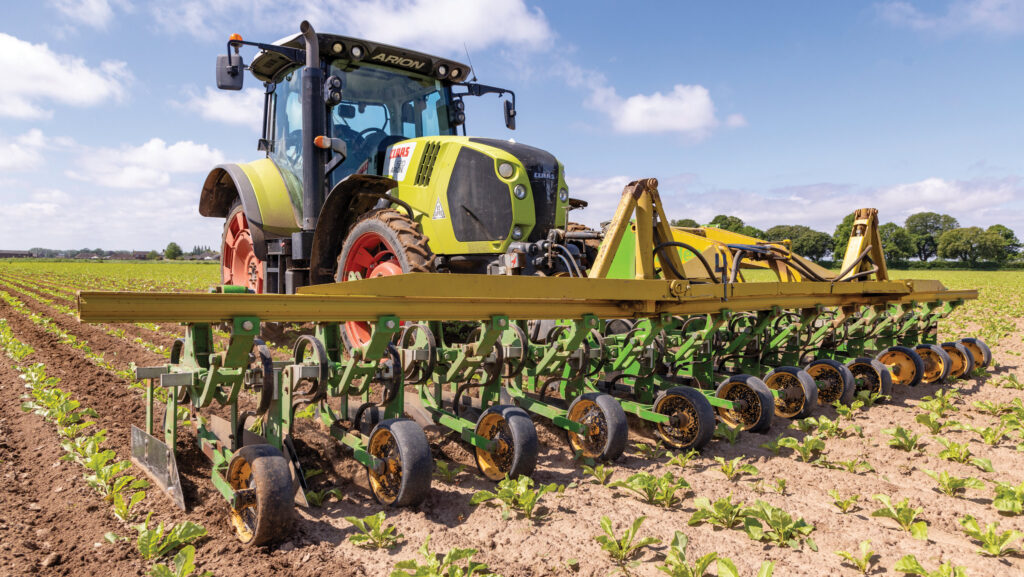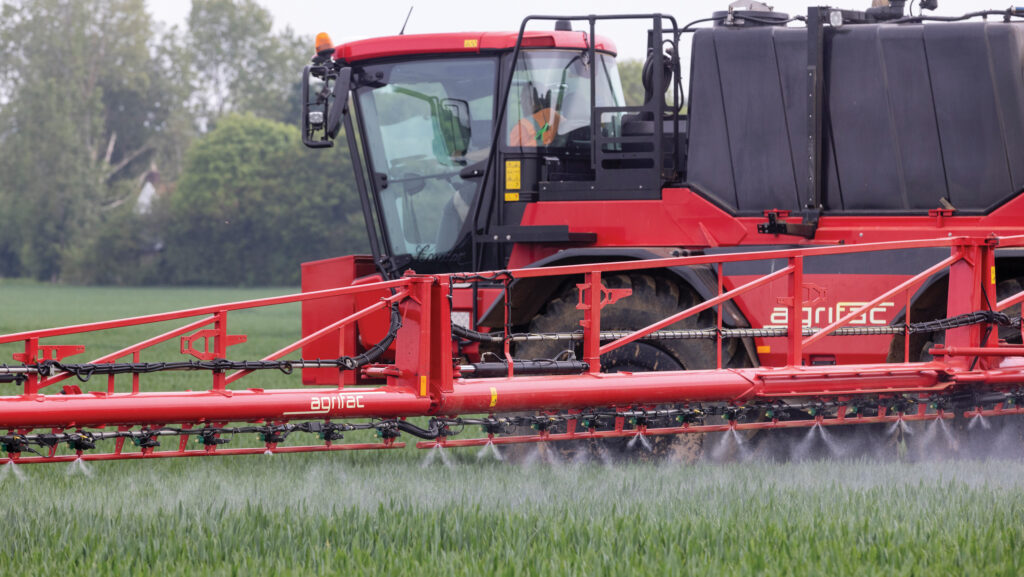Pitfalls and opportunities in carbon markets
 © GNP
© GNP Pressure on the UK to achieve net zero by 2050 has opened up new opportunities for farmers to generate a return from sustainable practices over and above commercial farming.
These range from selling carbon credits and biodiversity net gain (BNG) units to creating nutrient neutrality mitigation schemes, and receiving agricultural support payments for actions that improve the environment.
See also: More carbon articles on fwi.co.uk
Some payments can be stacked, too, which means the same piece of land can generate more than one source of additional income.
For Staffordshire zero-till arable farmer Clive Bailye, selling carbon credits through an agreement with soil-based carbon credit issuer Agreena has diversified his revenue stream in the past four years.
He is stacking this alongside Sustainable Farming Incentive (SFI) scheme payments.
“We are stacking on one-third of the land that we farm, and that third will produce 75% of our gross output next year,’’ calculated Clive, a panelist at a recent Farmers Weekly carbon markets webinar.
While the returns can be financially attractive, caution is needed too.
Jeremy Moody, Central Association of Agricultural Valuers (CAAV) secretary and adviser, has concerns about verifying, recording and monitoring issues relating to carbon credits.
He also reckons farmers should retain their credits to offset their own emissions to meet future supply chain requirements rather than cash them in.
Jeremy and Clive were joined on the panel by Cambridgeshire farmer Thomas Gent, who works for Agreena as its UK market lead, to look at some of the key issues.
What is a carbon credit?
A carbon credit, also known as a carbon certificate, is created by a farm reducing or avoiding emissions that would have otherwise been released, or by taking carbon from the atmosphere and storing it.
In quantity terms, a credit represents a reduction or removal of one metric tonne of carbon dioxide, or an equivalent amount of greenhouse gases (GHG) from the atmosphere, measured by referencing a baseline scenario.
To establish how many soil-based credits a piece of land has, the amount of carbon sequestered in it needs to be measured.
The credit is then based on any increase in that carbon from the baseline.
In arable farming, for example, an increase might result from a shift to practices that enhance soil health.
An important first step in the process is to quantify the level of carbon in the land.
This is done by gathering baseline information, from soil types to the management practices in individual fields.
“It is basic record-keeping, data that you will already have on your farm,’’ said Clive.
This baseline guides what carbon farming practices are appropriate for the farm, as well as measuring progress.
A carbon credit issuer quantifies the amount of carbon that is being emitted and the amount of carbon being put into soils.
Thomas said a typical UK arable farm would generate between 0.5 and 2 credits a hectare each year, but it can be as many as 3.
His farm averages 1.2-1.4 credits/ha a year – the net position of his farm sequestered into the soil.
What are those credits worth?
A carbon credit is tradable and therefore has a value.
Values vary depending on how credits are sold and who to, but Thomas said that the typical value of a credit is currently between £30/year and £50/year.
Top-performing AgreenaCarbon farmers earn £100/ha.

© GNP
Where can credits be traded?
There are two markets – the offset and the inset.
For offsetting, credits are sold to businesses outside agriculture, a real estate company for example.
“That company needs to pour a lot of concrete, which is a really big emitter, so they do something to compensate for that action,’’ said Thomas.
Insetting is the market for buying carbon certificates from within a supply chain.
This might be a grain trading company or a food company that wants to support farmers who also supply wheat into the commodity markets.
“They would buy carbon credits from a farm that is also growing wheat,’’ said Thomas.
Thomas said offsetting presents an opportunity for farmers to receive an income from sources that operate outside agriculture.
“It is the first time ever that farming has had the opportunity to get external money, money from outside the agricultural supply chain, and that is really exciting because that is where a lot of the money is.’’
The offsetting market is important as it sets a base value in the market, he added.
How can I trade my credits?
Businesses such as Agreena work with farmers transitioning to regenerative practices to quantify greenhouse gas reductions and carbon removals and issue credits, taking a percentage from the resulting carbon credit sale.
Landowners can also sell carbon credits directly. Carbon credits can be sold annually, an approach Clive has taken.
However, he admits that, with hindsight, he should have retained some to sell in future years as their value has increased in each of the past four years.
“We are becoming more mindful that we might start to bank those certificates,’’ he said. “It is a market that is becoming more grown-up every year.’’
What are the tax laws on trading carbon?
Voluntary carbon credits are currently treated as outside the scope of VAT, but from 1 September this year, VAT will apply to the sale of carbon credits.
“We assume that this will be standard rated at 20%, but full details have not emerged yet,’’ said Jeremy.
Clarity is also needed from HMRC on whether payments should be treated as income or capital gains tax.
“I think it should probably be treated as an income tax matter but I don’t think there is really a settled view yet,’’ Jeremy advised.
Are land values affected by the sale of credits?
While there is very little market evidence on this, Jeremy said land devaluation couldn’t be ruled out.
“We cannot say if the land will necessarily be the same value if credits have been sold away,’’ he said.
“There is that liability attached, but whether it is a small or large matter, there is no evidence.’’
Should I retain my carbon credits?
Once landowners sell rights to their carbon, it no longer belongs to them, and that could create problems further down the line, said Jeremy.
There is the matter of Scope 3 reporting, for example, which covers indirect emissions that are produced within the supply chain, including the direct emissions from a farm producing the raw ingredients for a food product.
“Scope 3 requires big businesses, like food processors, to show the carbon footprint in the supply chain,’’ Jeremy explained.
“To be able to show that you are in control of your carbon may become fundamental to having a place in the market.
“To have people come to you when you have sold away the easy things to do, the low hanging fruit, and to ask you to do more, that’s when it gets really hard.’’
Are carbon markets here for the long term?
Carbon markets are ultimately likely to be a transitional market, for the period of time needed to help the UK reach its net-zero target.
“Assuming we are capable of reaching net zero by 2050, at that point the carbon market will probably disappear because it will have done its job,’’ suggested Jeremy.
“This is putting a price squeeze on people to change their behaviours, reduce emissions, to get to net zero, and once it is done, the value disappears.’’
Sponsor
 AgreenaCarbon is Europe’s leading soil carbon programme. It supports more than 1,000 farmers’ regenerative transition over two million hectares of farmland in 18 countries, ensuring integrity outcomes for farmers, food production and climate.
AgreenaCarbon is Europe’s leading soil carbon programme. It supports more than 1,000 farmers’ regenerative transition over two million hectares of farmland in 18 countries, ensuring integrity outcomes for farmers, food production and climate.
Thanks to Agreena for making this webinar possible. Farmers Weekly had full editorial control of this report.
